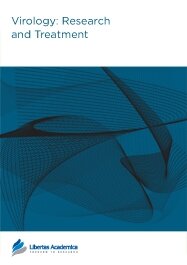

Publication Date: 01 Sep 2008
Journal: Virology: Research and Treatment
Citation: Virology: Research and Treatment 2008:1 65-73

1School of Public Health and Community Medicine, Faculty of Medicine, University of New South Wales, Australia. 2Centre for Infectious Diseases and Microbiology Laboratory Services, Institute of Clinical Pathology and Medical Research (ICPMR), Westmead Hospital, NSW, Australia. 3Centre for Transplant and Renal Research, Westmead Millennium Institute, University of Sydney, Westmead Hospital, NSW, Australia. 4National Centre for Immunization Research and Surveillance of Vaccine Preventable Diseases (NCIRS), The Children’s Hospital at Westmead, Discipline of Pediatrics and Child Health and School of Public Health, University of Sydney, New South Wales, Australia.
Abstract
Cytomegalovirus (CMV) is a significant pathogen causing disease in renal transplant patients. The highest incidence of CMV disease occurs during the first 3 months post-transplant and is most problematic in CMV-naïve transplant recipients. In this study, we conducted a retrospective review of two databases, the Australia and New Zealand Dialysis and Transplant Registry (ANZDATA) and the National Hospital Morbidity Database, from the Australian Institute of Health and Welfare (AIHW), to examine CMV in renal transplant recipients. The first source looked at CMV serostatus at the time of transplantation and the second recorded hospital admissions for recipients with invasive CMV disease.
From the ANZDATA registry, we obtained information from 13,530 renal transplants recipients from 1980 to 2004. Of these recipients, 7808 had a known CMV serostatus, of which 65.7% (5134/7808) had a positive sero antibody status and 34.2% (2674/7808) had a negative sero antibody status. In univariate analysis, factors significantly associated with renal rejection were being male, recipient age 50 years, being diabetic, being diagnosed with cancer at some point and having a positive EBV status. Positive CMV serostatus was not a contributing factor. Between 1993 and 2001 there were 1445 renal transplant recipients hospitalized in Australia with a diagnosis of CMV disease, of which 38% (554/1445) had CMV disease as a principal diagnoses. The average annual rate of admissions with any diagnosis was 3871 episodes per 100,000 people living with a functioning graft.
Preventative strategies for CMV in renal transplant recipients should be a priority. New vaccines for CMV may soon be available and renal transplant recipients would be a suitable target group for vaccination.
PDF (255.41 KB PDF FORMAT)
RIS citation (ENDNOTE, REFERENCE MANAGER, PROCITE, REFWORKS)
BibTex citation (BIBDESK, LATEX)

We were invited to write a review article for Virology: Research and Treatment. The review process was very quick and smooth and our interactions with Libertas Academica staff was clear, efficient and very personable. I highly recommend publishing with this group.
Facebook Google+ Twitter
Pinterest Tumblr YouTube